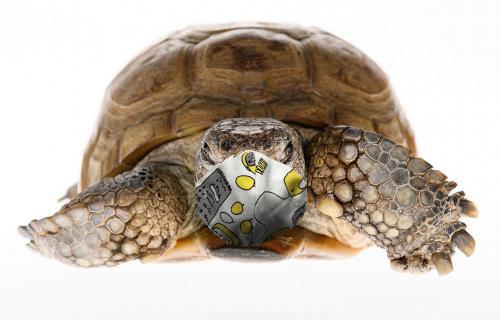March Break 2021

March 15 to 19, 2021
We are happy to welcome you back to the Nova Scotia Museum. We continue working to create a safe experience for you and our staff. Please note that public health guidelines will continue to be followed at our sites, wearing a non-medical mask is mandatory in our indoor spaces. Check out our “Know before you go” guides on each museum website to help prepare you for your visit.

Museum of Natural History
Halifax, Nova Scotia
naturalhistory.novascotia.ca
What’s bigger, you or a blue whale’s rib bone? Can you tell the difference between a drone bee and a worker bee? How old do you think Gus the tortoise is?
Discover the answer to these questions and more as you explore the wonders of Nova Scotia’s land and sea at the Museum of Natural History. From an eagle’s nest to the ocean floor, there’s something for everyone.
Maritime Museum of the Atlantic
Halifax, Nova Scotia
maritimemuseum.novascotia.ca
Located in the heart of Halifax’s historic waterfront, there’s no better place to immerse yourself in Nova Scotia’s rich maritime heritage than the Maritime Museum of the Atlantic.
From small craft boatbuilding to World War Convoys, the Days of Sail to the Age of Steam, the Titanic to the Halifax Explosion, you’ll discover the stories, events and people that have come to define this province and its relationship with the sea.
Museum of Industry
Stellarton, Nova Scotia
museumofindustry.novascotia.ca
One of Canada’s few comprehensive industrial museums, the Nova Scotia Museum of Industry tells the story of work and workers. Here you will find technology, steam engines and locomotives, cars and coal mining. Children will love the hands-on fun, the trains, and the demos.
Find the true meaning of “made in Nova Scotia” at the Museum of Industry.
Fundy Geological Museum
Parrsboro, Nova Scotia
fundygeological.novascotia.ca
The Fundy Geological Museum displays an ancient world and some of the oldest dinosaur bones in Canada. Meet some of the ancient creatures that lived here millions of years ago: the world's first reptiles, early dinosaurs, giant dragonflies, an ancestor of frogs and a sow-bug-like creature as long as a baseball bat. So many great fossils!
Explore mineral treasures of Nova Scotia exposed when the great Fundy tides washed away the sea cliffs. See a collection of beautiful amethyst and agate gem stones.
Black Loyalist Heritage Centre
Birchtown, Nova Scotia
blackloyalist.novascotia.ca
The Black Loyalist Heritage Centre tells the story of the world’s largest free African population outside of Africa, in the late 18th century in Nova Scotia.
Enjoy the view of Birchtown Bay when you climb up the Shaw Turret, which commemorates all Black Loyalist communities in Nova Scotia. Enter the Centre’s Lindsay Gallery and immerse yourself in the multimedia presentation of the Black Loyalist journey from Africa to the American colonies, then to Nova Scotia and back to Africa. Explore the virtual copy of the Carlton’s Book of Negroes and search for an ancestor who may have experienced part of this incredible journey.
Firefighters’ Museum of Nova Scotia
Yarmouth, Nova Scotia
firefightersmuseum.novascotia.
Visit the Firefighters’ Museum in Yarmouth to discover the history of firefighting in this province.
Imagine the clang of the fire bell, the smell of smoke and the feel of hot steam as firefighters of the past raced to save burning homes in communities across Nova Scotia.
See the types of fire engines used from the 1800s to the 1930s. Marvel at antique hand-drawn and operated engines such as Canada’s oldest horse-drawn steam engine, an 1863 Amoskeag Steamer. Take the wheel of a 1933 Chev Bickle pumper and see collections of antique toy fire engines, shoulder crests, patches and badges from fire departments around the world.
Ross Farm Museum
New Ross, Nova Scotia
rossfarm.novascotia.ca
Come to Ross Farm Museum to explore 60 acres of rolling farmland and discover what life was like on a Nova Scotia family farm over 100 years ago.
An authentic, living heritage site, much of the farm remains the same as it was in the 1800s. From historic Rose Bank Cottage where the Ross family lived, to daily activities such as wool spinning, candle making, and ox shoeing, the museum gives visitors the chance to experience yesterday’s traditional farming methods, while learning sustainable ways of living for today.